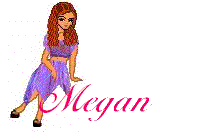Traced linen reached it’s first peak of popularity in the thirties and forties, and it tapered off a little after that, to reach another peak in the mid to late nineties until now.
One of the beauties of traced linen is the high quality of the linen you embroider on. Traditionally, this is unbleached Irish table linen, one of the best you can get. The design is printed onto the linen, and the edges are usually prepared ready for a crochet edging.
Most traced linen is freestyle embroidery, and kits come with the piece of traced linen, a chart showing stitch style, colour and placement, and instructions for the crocheted edging.
There have been a few pieces that are stamped cross-stitch, which comes with a more traditional cross-stitch chart.
Designs are often floral, and you usually find the same design as a Duchess Set (2 doyleys and a centrepiece), a Table Runner, Tray Cloth, and an Afternoon Tea Cloth. For many girls, these sets formed the nucleus of their Hope Chest and having a number of them finished was a mark of prestige.
I inherited my Grandmother’s doyley stash, and the designs are still fresh and some of them are still available to stitch now – the Crinoline Lady has remained a perennial favourite amongst stitchers.
Some more modern designs include a very bright design of lemon, orange and lime slices, and another with a row of teacups.
Semco (part of the JP Coates / Anchor group) has always been a leader in traced linen patterns, however DMC also has a very nice selection. Both DMC and Semco kits use the highest quality linen. Unfortunately, I have had a very bad experience with Bucilla, who also has traced linen. Their designs came printed on nylon, with nylon lace already sewn on.
Where can I buy Traced Linen projects?
Funnily enough, my online searching has only turned up Australian sites for Traced linen. However, most of these will ship overseas, and I’ve given a selection at the end of this article.
You should always try your local Needlework store who should stock them, or will be willing to get them in. They will also have the latest catalogues with pictures of the pieces in it.
Traced linen is a great way for both beginners and more experienced embroiderers to create something beautiful using freestyle techniques. You can follow the suggested stitch guide, or you can use your own imagination, choosing colours and stitches to suit your décor and personality. There are no hard and fast rules: one of the pieces I inherited from Grandma and that I have to finish is a beautiful afternoon tea cloth that she had decided to do as cutwork, rather than the suggested stitches. The effect of the cream thread she’s used on the cream linen gives a beautiful heirloom look.
And that’s what traced linen is about – it’s a beautiful heirloom piece that you’re stitching. A piece that is not only beautiful, but also practical.
Stitching tips and tricks
Usually, you will use stranded floss to stitch your piece. However, why not try using silk floss, or the DMC linen floss range. These two different thread types will give very different results to your piece.
One of the things that you absolutely cannot do with traced linen is to “carry” threads from one part of the design to the other, unless the carry thread will be completely stitched over. With this type of embroidery, it is vital that you take great care with the back of your work. Knots, lumps and bumps at the back will show on the front.
Care of traced linen embroideries
These are incredibly hardy pieces – as most practical embroidery is.
I wash my smaller traced linen pieces in a lingerie bag, usually just in with the normal wash. The first wash should always be separately, and hand washed, in case the colour of the thread runs.
Large pieces – tablecloths, etc – should be washed in a gentle cycle in cold water.
Just hang them on the line to dry. To iron, iron the WRONG side. Spray lightly with spray starch, or ironing aid, and then iron using the “cotton” setting. By ironing on the wrong side, the embroidery on the right side lifts, and stands out from the fabric, giving a beautifully three dimensional look.
Do not fold until the piece has cooled.
If you are going to store your embroidered linen, fold it with a piece of white tissue paper folded into it, and put cedar balls in the cupboard, to keep away moths and other nasties that like to nibble on embroideries.
With care, your piece of traced linen will give you pleasure and use for many years to come. I know – I’m using 70-year-old doyleys!!
Traced linen is something that you will take pride in doing – from the initial stitches, to the finishing doing the crochet edging.
Links
Semco Australia
Nellie Belle Craft
Copeland Linen – UK
Needlegraphics Downunder
Traced Linen Tablecloths – UK
CraftsOnline Store
Is there anything that you would particularly like to see an article on? If so, please e-mail me with your suggestions.
Happy Stitching

© 2007 Megan McConnell


